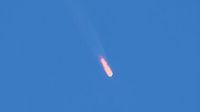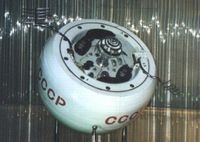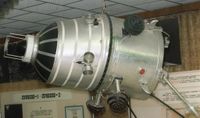After more than half a century in space, a Soviet spacecraft is set to make its return to Earth, reigniting interest in the early days of space exploration. Launched in 1972, the spacecraft known as "Kosmos-482" was part of a mission aimed at studying Venus. Its twin, the successful "Venera-8," completed its mission flawlessly, but "Kosmos-482" never left Earth's orbit and instead became a piece of space debris, circling the planet for over 50 years.
The anticipated date for the re-entry of "Kosmos-482" is May 10, 2025, but experts caution that predicting the exact point of its atmospheric entry remains a challenge. This uncertainty arises from solar activity, which affects the density of the upper atmosphere and consequently the trajectory of the satellite. The predicted zone for its fall spans a vast area, from Great Britain in the north to New Zealand in the south, covering nearly 52 degrees of latitude. Fortunately, it is confirmed that the spacecraft will not fall over Russia.
As it descends, "Kosmos-482" could reach speeds of up to 240 kilometers per hour before colliding with Earth. While this speed might seem alarming, experts assert that the risk to human life is minimal, likening it to the rare occurrence of a meteorite landing, which seldom causes significant harm. However, there remains a possibility of damage, especially if the spacecraft survives its fiery passage through the atmosphere and reaches the ground intact.
Remarkably, "Kosmos-482" was designed with durability in mind. Weighing nearly 500 kilograms and measuring about one meter in size, the spacecraft's titanium hull was engineered to withstand the extreme conditions of Venus, including pressures exceeding a hundred atmospheres and temperatures around 500°C. This robust construction leads scientists to believe that it may not completely disintegrate upon re-entry into Earth's atmosphere.
Interestingly, the spacecraft was equipped with a parachute system intended for a soft landing on Venus. Although experts consider the chance of one of these parachutes deploying during re-entry to be negligible, it remains a fascinating aspect of its design. In reality, if "Kosmos-482" withstands the atmospheric entry, it will likely crash onto the surface without any braking mechanism.
The final descent of "Kosmos-482" concluded in the Indian Ocean, approximately 560 kilometers from Middle Andaman Island. The landing was reported by the Roscosmos agency to have occurred smoothly, without explosions. However, the vastness of the ocean and the approximate coordinates make locating the capsule a daunting task. It is unlikely that any museum will receive a new exhibit from this orbiting relic.
There is a glimmer of hope regarding the fate of the capsule. Astronomer Pavel Shubin speculates that the capsule may not have sunk entirely and could be on the brink of neutral buoyancy, potentially allowing it to be spotted by passing ships. This possibility, albeit slim, offers a chance for recovery.
The interest in Venus, which sparked significant curiosity during the mid-20th century, has shifted somewhat in recent years as scientists turn their attention to Mars. Nonetheless, Venus continues to capture the imagination of researchers, who are eager to uncover its many secrets. In fact, there are still numerous mysteries surrounding the second planet from the Sun, and resources are available detailing five of these enigmas.
Reflecting on the historical context, Soviet interplanetary spacecraft were often launched in pairs to ensure redundancy in case of failure. This strategy was employed during the launch of "Venera-8" and its counterpart "Kosmos-482" in 1972. While "Venera-8" successfully completed its mission and operated on the Venusian surface for nearly an hour, "Kosmos-482" encountered a mishap with its booster and failed to achieve interplanetary trajectory. Following the policy of the era, it was not designated as a "Venus" mission but was instead included in the lengthy list of "Kosmos" satellites, which encompassed both unsuccessful missions and classified military satellites.
The Soviet Union was unique in its achievements on Venus, with missions like "Venera-13" and "Venera-14" successfully transmitting color images and audio recordings of the Venusian wind back to Earth in 1982. These milestones underscored the USSR's prowess in space exploration during a time of intense competition in the space race.
As "Kosmos-482" prepares for its final descent, it serves as a reminder of the ambitious explorations of the past and the enduring quest to understand our neighboring planets. Its journey from the launch pad in 1972 to its eventual landing in the Indian Ocean encapsulates a significant chapter in the history of space exploration, demonstrating both the triumphs and challenges faced by early scientists.



